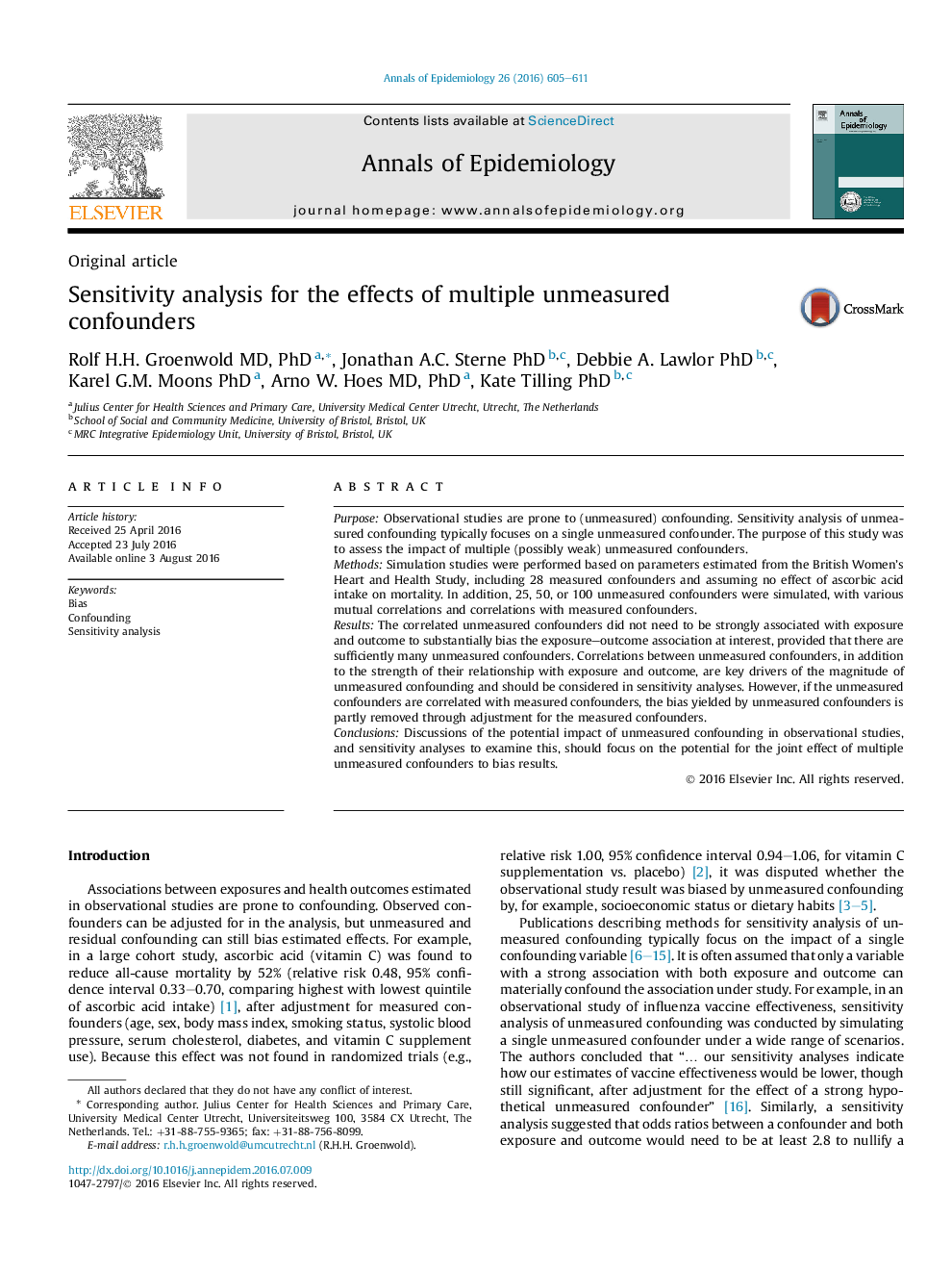| Article ID | Journal | Published Year | Pages | File Type |
|---|---|---|---|---|
| 3443597 | Annals of Epidemiology | 2016 | 7 Pages |
PurposeObservational studies are prone to (unmeasured) confounding. Sensitivity analysis of unmeasured confounding typically focuses on a single unmeasured confounder. The purpose of this study was to assess the impact of multiple (possibly weak) unmeasured confounders.MethodsSimulation studies were performed based on parameters estimated from the British Women's Heart and Health Study, including 28 measured confounders and assuming no effect of ascorbic acid intake on mortality. In addition, 25, 50, or 100 unmeasured confounders were simulated, with various mutual correlations and correlations with measured confounders.ResultsThe correlated unmeasured confounders did not need to be strongly associated with exposure and outcome to substantially bias the exposure–outcome association at interest, provided that there are sufficiently many unmeasured confounders. Correlations between unmeasured confounders, in addition to the strength of their relationship with exposure and outcome, are key drivers of the magnitude of unmeasured confounding and should be considered in sensitivity analyses. However, if the unmeasured confounders are correlated with measured confounders, the bias yielded by unmeasured confounders is partly removed through adjustment for the measured confounders.ConclusionsDiscussions of the potential impact of unmeasured confounding in observational studies, and sensitivity analyses to examine this, should focus on the potential for the joint effect of multiple unmeasured confounders to bias results.
